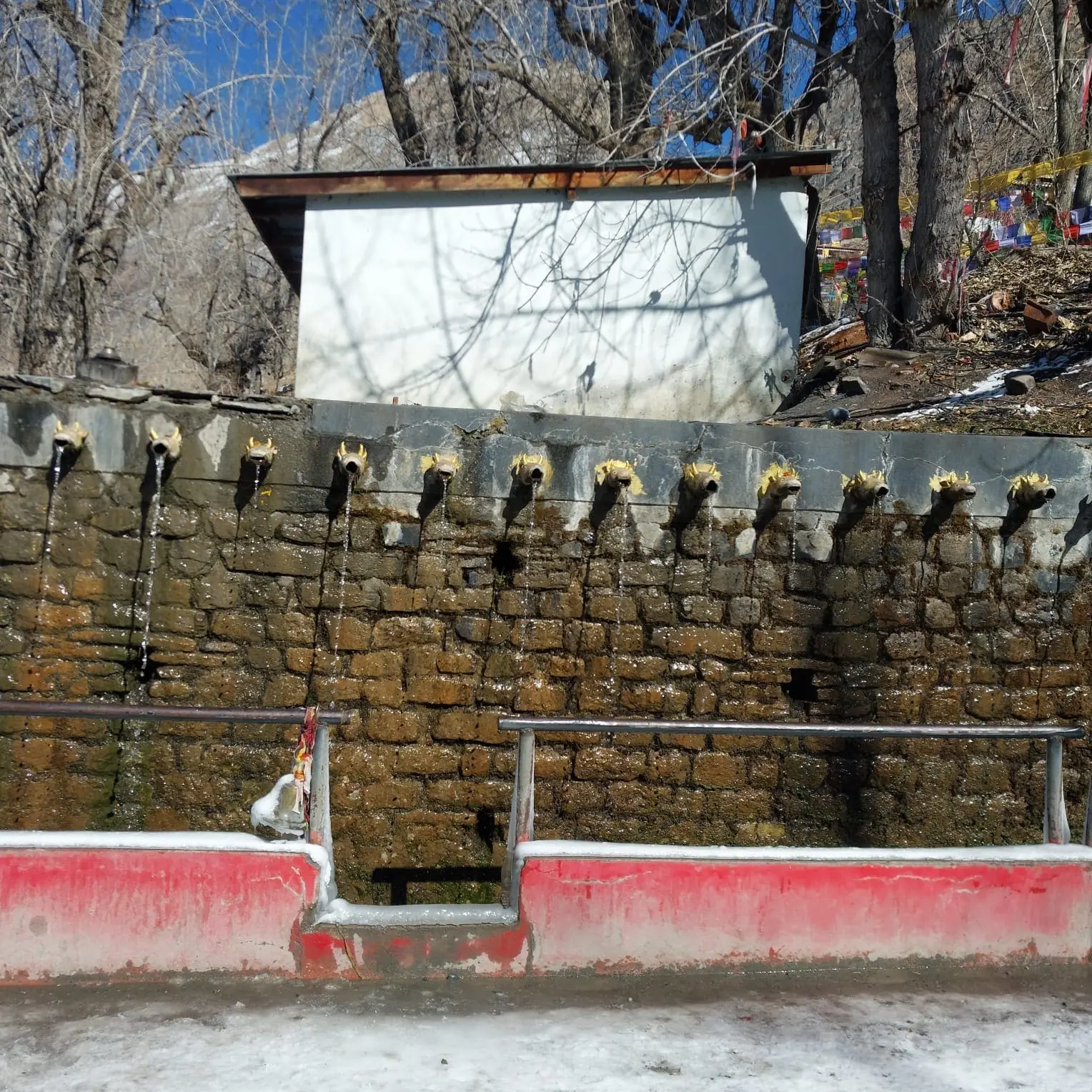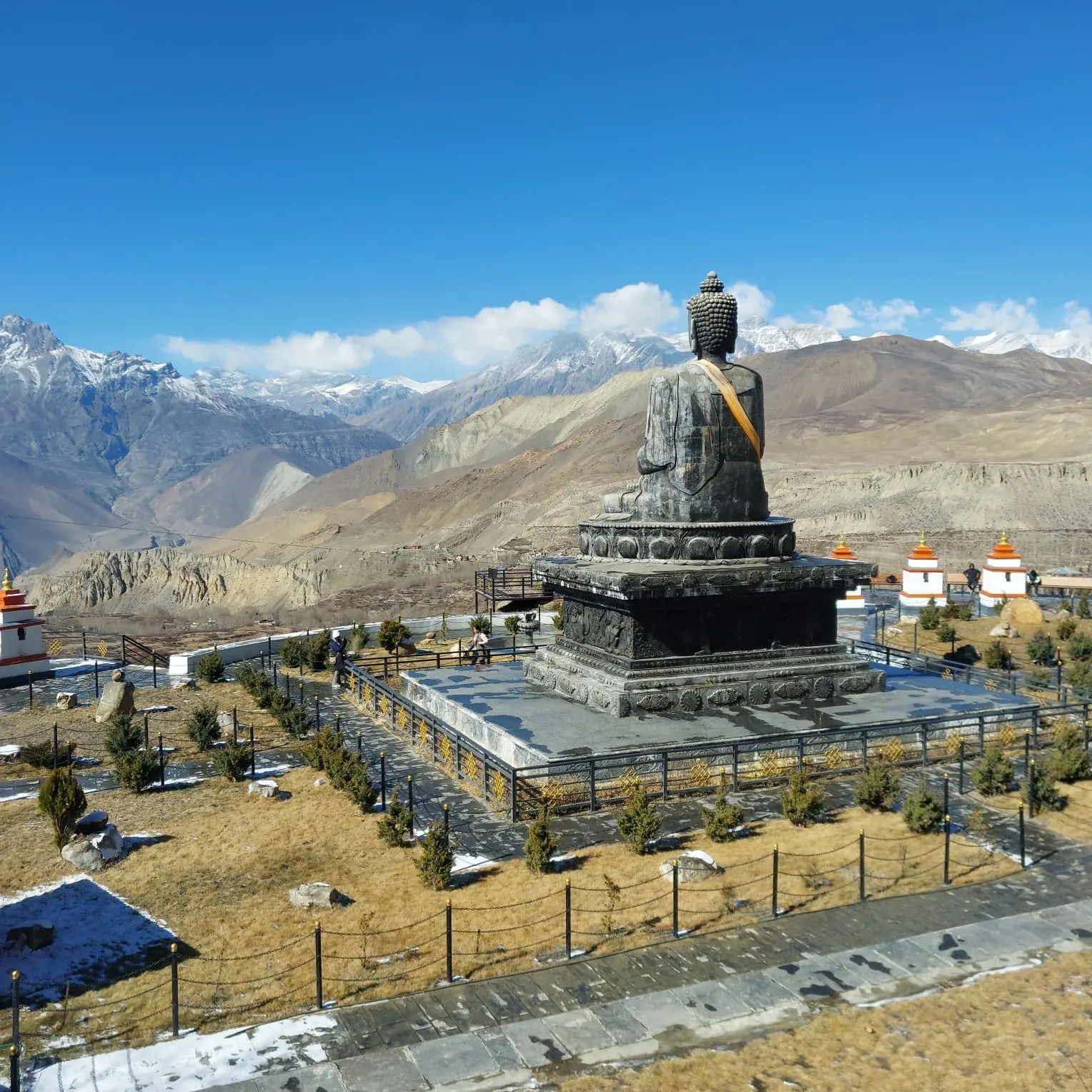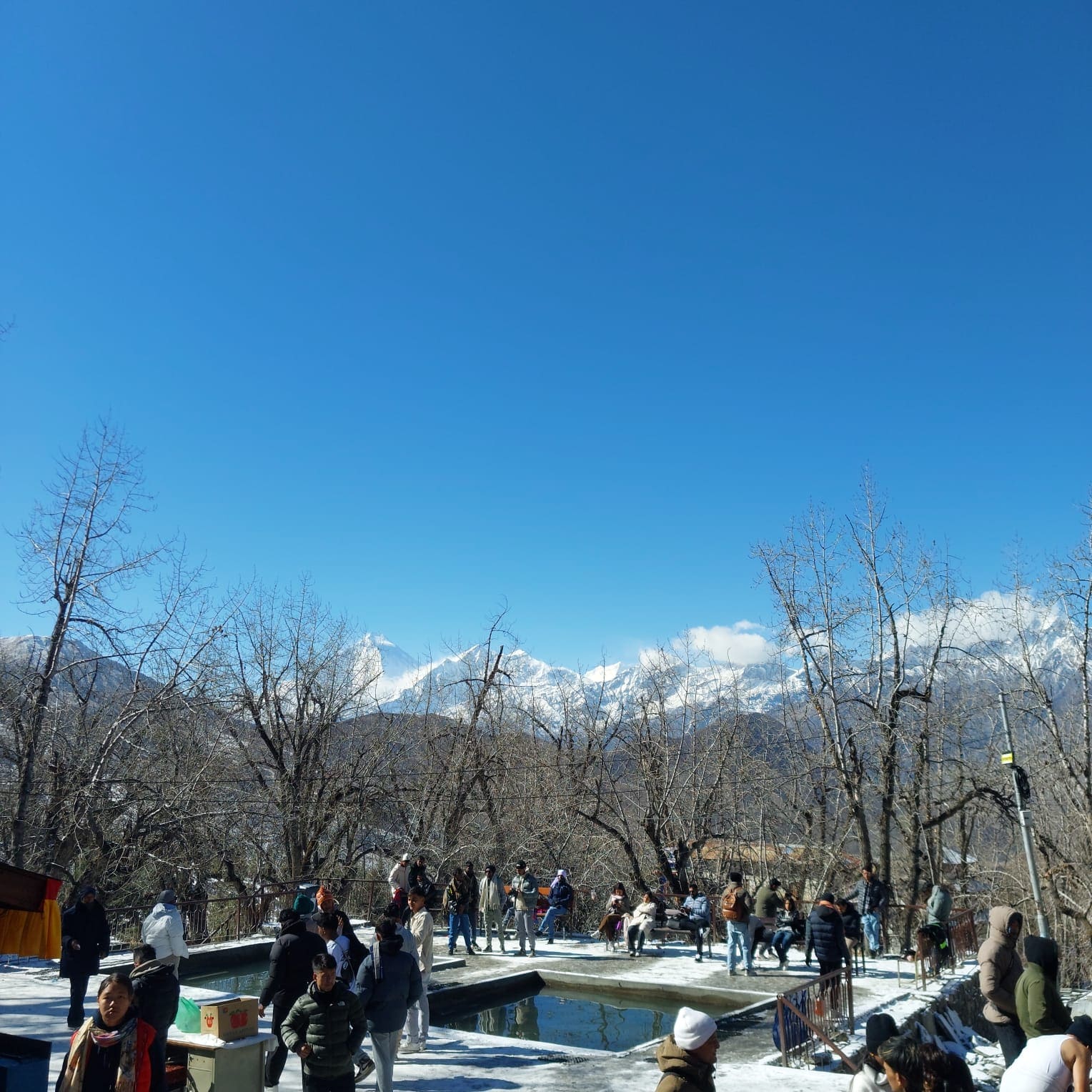Muktinath Temple Tour Package is an initiative that takes you to a sacred pilgrimage site of Nepal located at 3,710 meters above sea level in the Mustang district. Hindus and Buddhists both believe Muktinath Temple to be a temple that grants salvation and deliverance from the birth and rebirth cycle. The trip blends nature and spirituality, featuring breathtaking views of the Annapurna and Dhaulagiri ranges, unconventional cultural encounters, and the tranquility of Himalayan vistas. By road, by flight, or both, the Muktinath trip is a spiritually nourishing activity for pilgrims and adventure seekers alike.
About Muktinath Temple
Muktinath Temple is one of Nepal's most revered pilgrimage sites, standing at 3,710 meters (12,172 ft) above sea level in the Mustang district. The temple is revered by both Hindus and Buddhists alike as a symbol of religious harmony, peace, and spiritual freedom.
For the Hindus, Muktinath is among the 108 Divya Desams (sacred Vishnu temples mentioned in the ancient scriptures) and is devoted to Lord Vishnu as the "Lord of Salvation." Pilgrims certainly believe that a temple visit and a bath under its 108 sacred water spouts (known as "Muktidhara") and two sacred ponds (referred to as "Muktikunda") erase all sins and provide moksha (release from the cycle of birth and death).
To Buddhists, the temple itself is sacred, as well, because they attribute it to Guru Padmasambhava (Guru Rinpoche), who is believed to have practiced meditation in adjacent caves. The blazing eternal flame, of course, burning out of a rock near a spring, is also representative of enormous spiritual power uniting earth, water, and fire.
Surrounded with equally picturesque scenery of Dhaulagiri and Annapurna Himalayan ranges, the temple is equally a religious site as it is a location of similarly stunning natural scenery. Pilgrims and travelers are able to reach Muktinath by road travel from Jomsom, by flight from Pokhara to Jomsom, followed by a short drive/walk, or by helicopter tour for a faster and more convenient solution.
Muktinath Temple is more than a religious shrine it is a spiritual retreat where nature, culture, and spirituality come together, and thus it is considered one of the most cherished pilgrimage sites in the Himalayas.
Why Visit Muktinath Temple?
Spiritual Significance
Muktinath is a salvation temple where the pilgrims find that they can gain moksha liberation from birth and death. To the Hindus, it is one of Lord Vishnu's 108 Divya Desams, and to the Buddhists, it is a place related to Guru Padmasambhava. The temple is a beautiful symbol of the peaceful coexistence of two great religions.
Sacred Rituals
Bathing in the 108 holy water spouts (Muktidhara) and the two sacred ponds (Muktikunda) will purify sins and cleanse the soul. The naturally burning eternal flame nearby is another significant attraction, representing the presence of earth, water, and fire all together that is divine.
Scenic Himalayan Views
Situated at 3,710 meters, the temple provides breathtaking views of the Annapurna and Dhaulagiri ranges. The trip itself over the Kali Gandaki Valley, Jomsom, and Mustang gives visitors some of Nepal's most beautiful landscapes.
Cultural Harmony
Muktinath is an example par excellence of religious tolerance, where Hindu and Buddhist practices exist harmoniously. Guests get to experience the rituals, monasteries, and prayer flags, enriching the region with rich cultural diversity.
Adventure with Devotion
The journey to Muktinath is not merely a pilgrimage but also an adventure. The traveler has the option of scenic flights, road trips, short treks, or helicopter tours to make the journey accessible to spiritual travelers as well as those who love adventure.
Once-in-a-Lifetime Experience
For most, a visit to Muktinath is a dream journey that is a mix of devotion, tranquility, and nature's beauty. The peaceful surroundings of the temple provide an especially intimate feeling of inner peace that lingers long after people get back.
Best Time to Visit Muktinath Temple
Muktinath Temple in the Mustang area of Nepal can be reached throughout the year, but there are times of the year that make the experience the best. Because it falls in the rain shadow of the Himalayas, the weather is fairly dry as opposed to the rest of Nepal, but the climate does shift by season.
The months of March to May are among the best times to visit. The climate is warm at this time, there is clear sunshine, and the hillside is adorned with rhododendrons and other alpine flowers in blossom. The pleasant weather enhances the drive along the road and also the flight to Jomsom, and the view of the Annapurna and Dhaulagiri ranges is especially stunning.
The other best time is autumn (September to November), also the best time to visit Nepal. After monsoon showers, the atmosphere is crystal clear, unobscured by haze, and reveals breathtaking Himalayan landscapes. The weather is pleasant during the day, cool at night, and stable weather, making it perfect not only for pilgrimage but also for incorporating the journey to trekking through Mustang or the Annapurna area.
Winter (December to February) is not closed either, but very cold conditions, particularly nights, can be expected. Sometimes, the roads get obstructed due to snow, although pilgrims can opt for helicopter tours if they do not wish to endure poor road conditions. This season is favorable to pilgrims who want a less crowded, quiet pilgrimage.
The monsoon season (June to August) is generally the least desirable time to travel to Muktinath. While Mustang itself is not very rainy, flights from Pokhara to Jomsom are generally suspended due to weather conditions, and road trips become muddy and challenging. However, some risk-taking travelers like this time as the region is less crowded.
How to Reach Muktinath Temple?
You access Muktinath Temple (3,710 m) through a thrilling but exhilarating trekking experience in the Mustang region of Nepal. There are several options to get there, based on time, cost, and preference.
By Flight + Drive/Trek
The most convenient option is a 20-minute flight from Pokhara to Jomsom or fly directly from Pokhara to Muktinath. From Jomsom, it is possible to drive a jeep (1.5–2 hours) or trek 6–7 hours via scenic trails to Muktinath. This mode of travel saves time and one gets to see beautiful vistas of Kali Gandaki Valley and the Himalayan ranges.
By Road Journey
For thrill-lovers, Muktinath can be accessed entirely by road. The journey starts from Pokhara via Beni, Tatopani, Ghasa, Marpha, and Jomsom, before finally reaching Muktinath. The road trip takes around 2–3 days, depending on road conditions, and offers a glimpse of small mountain towns and village life along the way.
By Helicopter Tour
For the more expensive and speedier option, travelers can have a helicopter journey from Pokhara or Kathmandu to Muktinath directly. It is the most comfortable option, best suited for elderly pilgrims or those with less time. The helicopter lands right in front of the temple for easy reach for darshan (worship) and rituals.
Trekking Option
Adventure-seekers can also reach Muktinath on the Annapurna Circuit Trek or a private trek from Jomsom. Trekking allows you to experience the natural beauty and culture of Mustang but consumes more time and physical effort.
Permits Required for Muktinath Temple
To reach Muktinath Temple in Mustang, Nepal, there are certain permits that need to be arranged depending on the route and means of travel. Since the temple is inside the Annapurna Conservation Area, everyone traveling there will require an Annapurna Conservation Area Permit (ACAP). This is a required permit for the pilgrims as well as the trekkers because it helps in the conservation of the area. The ACAP can be obtained in Kathmandu or Pokhara at the start of the journey.
If you are trekking to Muktinath, then you will need a Trekkers' Information Management System (TIMS) card as well. The TIMS card is merely for protection and for record-keeping so that the authorities can locate trekkers and provide assistance if needed. If you're driving or flying or helicopter directly to Muktinath, then you may not need the TIMS card, but it's always a good idea if part of your agenda is to trek up in part.
Tourists traveling only to Lower Mustang (where Muktinath is located) do not need any special restricted permits. But in case you plan to go further north into Upper Mustang, there is an additional Restricted Area Permit (RAP) required, which is much more expensive and must be reserved with a registered trekking agency.
Food Options in Muktinath Temple Area
Being a pilgrimage site located at a high altitude in Mustang, Muktinath Temple is not bestowed with luxury restaurants and an array of cuisines, but still has sensible food in the villages of Ranipauwa and Jomsom. Food is mostly available in the local teahouses, lodges, and small eateries that cater to the needs of pilgrims and trekkers alike.
The most common and conventional meal is Dal Bhat, a healthy Nepali meal of rice, lentil soup, seasonal vegetables, and pickles, normally supplemented by optional meat curry. It is the best option for high-altitude nutrition and energy. Others that are favorites are noodles, soups, fried rice, chapati, Tibetan bread, thukpa (noodle soup), momo (dumplings), and plain vegetable or potato fare.
Since Muktinath is a sacred site, you will not find non-vegetarian food in the temple complex. However, in Jomsom or Kagbeni, some lodges offer chicken or yak meat as an alternative to tourists who are eager for something else. Vegetarian food is most common and is more apt to be ordered by pilgrims.
Tea, coffee, and hot beverages abound for warding off the chill. Popular among these are the herbal teas, ginger lemon honey tea, and butter tea. The majority of breakfast items in most lodges include eggs, pancakes, porridge, muesli, and toast for locals and foreign visitors alike.
Food is plain but nourishing, and luxury should not be expected. The simplicity of the food is part of the pilgrimage spirit, though. Some dry fruit, energy bars, or chocolates are a useful addition if you are walking or driving long distances between villages.





